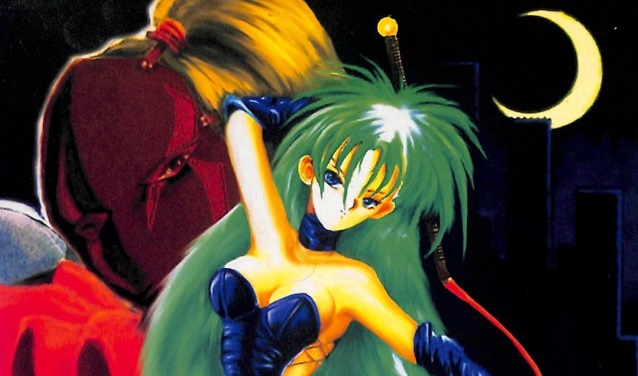
I recently completed a 1cc challenge of Rusty, a rather well-known Castlevania-ish game from 1993. Though it may be more accurate to call it a “no game over” challenge since the game doesn’t really incorporate the concept of “credit” per se.
Rusty is a pretty interesting game. It adopts a lot of the aesthetic and gameplay of the Castlevania series, to the point where it’s usually described as a “Castlevania clone” from what I’ve seen.
I’m not exactly the most experienced Castlevania player out there, but it reminded me a lot of the MSX Castlevania (Vampire Killer), which is actually the Castlevania game I’m most familiar with out of all of them. Like that game, Rusty incorporates some maze/puzzle elements into its stages, in addition to the sidescrolling action you would expect.
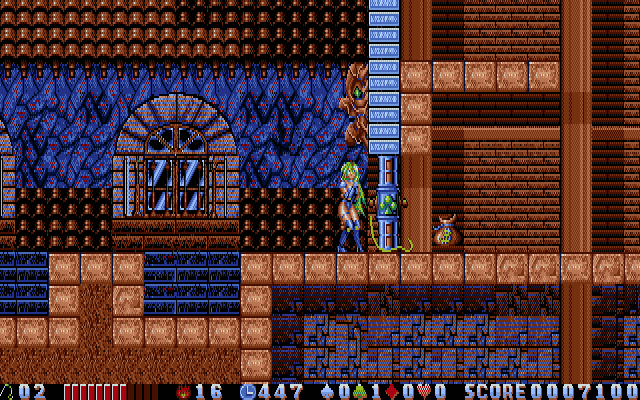
Overall, Rusty is a good game, though not without its share of flaws. Particularly, I found that the second half of the game is severely lacking in challenge, if you learn how to play the first half well and can get past stage 5 (of 10) with few or no deaths.
Much of the English-language coverage of Rusty (of which there is quite a lot despite the fact that the game was never officially released outside of Japan) that I have seen proposes that the game is challenging. Technically, I agree with this assessment. The enemies and traps with which the game presents the player prove challenging, beginning to end, and there is a steady difficulty curve as the player proceeds through the game.
However, certain design choices allow the player to luck through and/or bruteforce the challenges in the second half of the game, provided they play the first half with enough competence.
For instance, the end of stage 5, which marks the game’s halfway point, allows the player to stockpile a large number of lives very easily. During an on-rails (literally) minecart ride, all the player has to do to collect dozens upon dozens of 1-up and score-bonus items is jump repeatedly. Accidentally colliding with the ceiling in this section leads to instant death, but the timing for the jumps is extremely forgiving, so picking up these powerful items becomes trivial. Despite the fact that stage 5 is actually one of Rusty’s more difficult stages, the player can often exit this stage with more than double the lives they entered with, just because of this section.
With so many lives stockpiled, the player can then easily get through the rest of the game in a very cheap way, just lucking through sections instead of mastering them (because they can afford to die repeatedly) and tanking bosses instead of dodging their attacks and effectively employing Rusty’s (the main character’s) offensive tools.
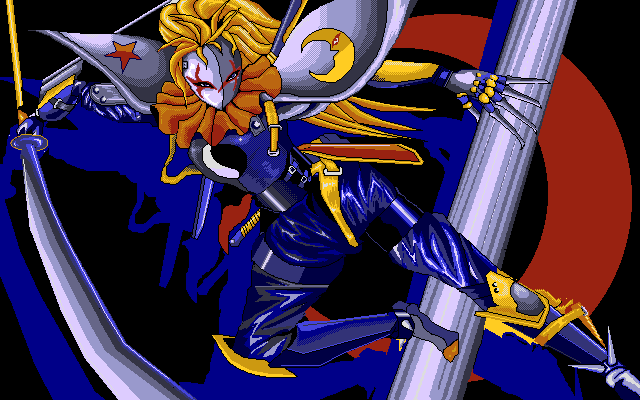
So yes, Rusty is “hard.” The game’s levels and enemies are challenging.
But when you trivialize half the game, and even defeat the final bosses by just tanking hits with all the lives you’ve built up over the course of the game, and still walk away with a “no game over” run under your belt, as I did — well, then you begin to wonder if it couldn’t have been balanced a bit better not to empower the player so disproportionately much.
In hindsight, I should have adjusted my challenge to “no death.” That would have made the second half of the game more compelling since it would have disallowed this style of play. But I didn’t, and at this point I’m pretty much done with the game. If I ever go back to it one day though, maybe I’ll try this extra challenge.
Another oversight that can trivialize a lot of Rusty‘s challenge is that in certain spots it is possible to farm extra lives by repeatedly killing yourself.
The reason is that there are certain rooms in the game — usually behind one or more doors that require hidden keys to open — where you can find 1-up items and score-bonus items.
This sounds fine on paper: these are essentially secret rooms that the player must find, or otherwise overcome difficult challenges to be able to access — so the high risk of getting to these rooms ultimately delivers a high reward.
Sounds good.
The problem is how — and where — these rooms are implemented. Some of them are right next to checkpoints. When the player dies, the items respawn, and the doors to them remain open. So the respawning 1-up items let you kill yourself over and over at no cost, and meanwhile, the score items will gradually increase your score, giving you more and more lives. This means that once you access one of these rooms, you can just collect all the items, kill yourself on purpose, repeat, and watch your lives gradually go up, ultimately allowing you to cheese portions of the game, as described above.
I didn’t abuse this exploit in my time with the game, even once I realized how easily exploitable it is. But there are several places you can do it, the most optimal of which is midway through stage 9, yet another reason why the second half of the game lacks challenge because of how everything is implemented.
And there’s another problem with this too. This trick also means that scoring is fundamentally busted: score is functionally infinite, at no cost to the player. Though to be fair, Rusty is really not the type of game where going for high scores is compelling. Still though.
You could fix this by making it so that the items don’t reappear after the player dies, or by making it so that doors go back to being closed after the player dies. However the latter would cause problems for other parts of the design, and would necessitate rethinking the puzzle/maze-ish nature of some of the levels. So the former would be the optimal solution.
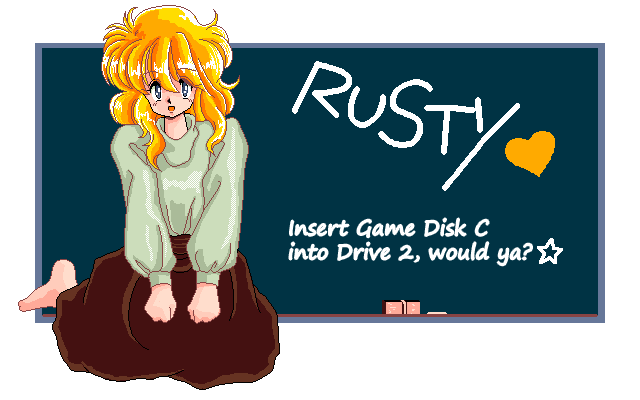
Overall though, my complaints aren’t major or anything. In the end, I still consider Rusty to be a pretty good game. Some of the level layouts and designs are quite well thought out, especially stage 4.
The art and sound of the game work well to convey a great dark fantasy setting, and the aggressive, undead-themed enemies add to the effect.
The bosses are also done rather well. They can hit you hard and aren’t super spongy.
The game has pad support — thankfully, since I can’t imagine having to play this with the keyboard. Obviously controller support is the standard nowadays, but it wasn’t a guarantee when this game came out, so it’s nice that it’s in there.
So yeah, while not perfect, Rusty is still a highly worthy game in my opinion, especially for those with a taste for oldschool Castlevania, obviously.
As for playing Rusty today, 30+ years after its release, there are speedrun guides available for those who are into that. Speedrunning may actually be a pretty fun way of engaging with the game given how trivial a lot of the “1cc” becomes.
Also, for some reason there was an official vinyl release of the Rusty soundtrack just last year (2023), featuring some new artwork. Rusty‘s music is quite good, so this is nice. However, it only covers the OPNA version of the soundtrack. I personally prefer the OPN version, but I’m probably in the minority.
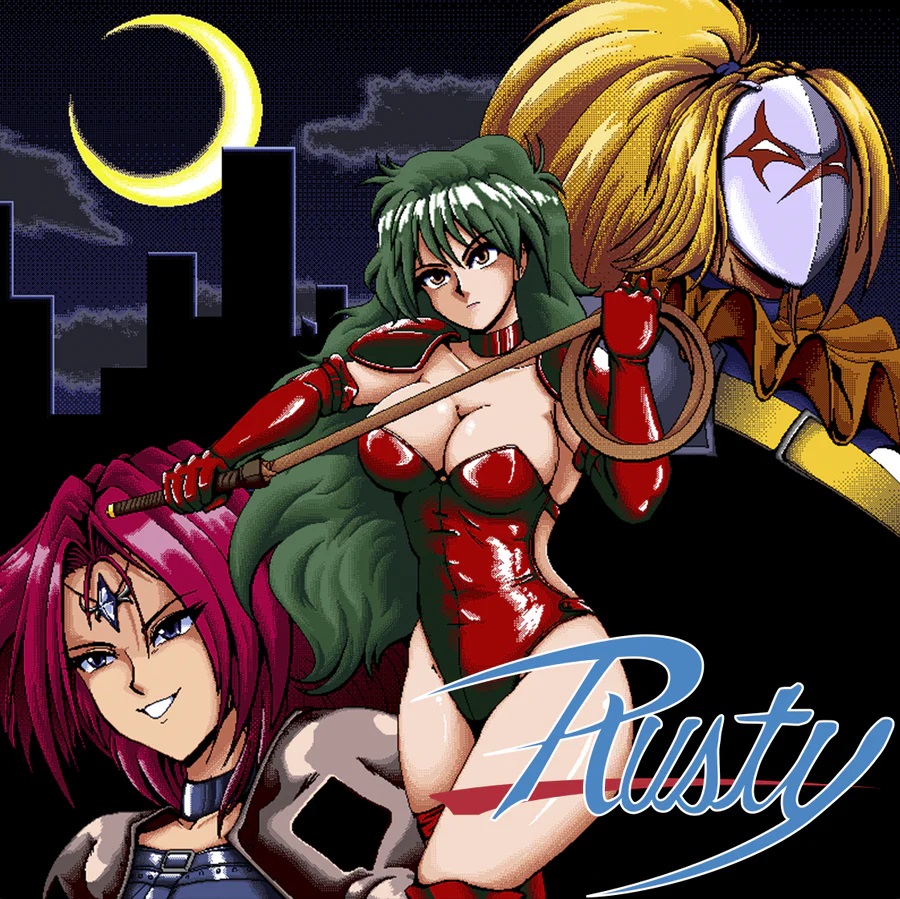
Amusingly, the title of one of the tracks on this new album was translated incorrectly. The first track on this release is called “Blood Swoon Castle.” But the files for the original game actually call this track “Blood Soon Castle.” Both of these are likely incorrect translations of ブラッドソーン城, the castle in the game where the villains are conducting human sacrifices and such. The 2017 English patch for the game renders the name as “Bloodthorne Castle,” which is likely what was intended.
Lastly, Naoto Niida, the creator of Rusty, commented on this retrospective video from two years ago. (As a side note, I’m pretty glad I didn’t watch this video till I completed the game since it explains the infinite lives exploit.) If you scroll down to the comments, you’ll see several long threads started by him. He revealed some of the development details from back in the day and also expressed interest in making the game available again on modern platforms in some form. As of this writing, nothing has materialized, but who knows? Rusty is certainly recognized as a cult… maybe not “classic,” but at least a “cult good game” nowadays. Maybe it’ll see a second life in the near future.